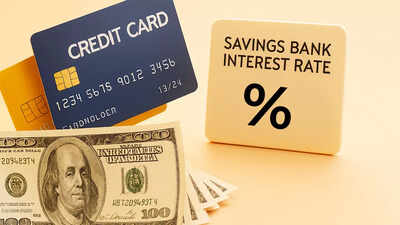ARTICLE AD BOX

Federal Reserve policy adjustments influence consumer costs for various financial products. (AI image)
How does the US Federal Reserve’s decision to cut the benchmark rate by 25 basis points to the 4-4.25% range impact the lives of common people in America? The Federal Reserve establishes the federal funds rate, which governs inter-bank lending practices.
Although consumer borrowing rates are not directly tied to this rate, Federal Reserve policy adjustments influence consumer costs for various financial products, including credit cards, vehicle financing, housing loans and other financial services.The Jerome Powell-led Federal Reserve announced its first benchmark interest rate reduction in nine months on Wednesday. In the period since the previous reduction, inflation control has become less effective, coupled with a deteriorating employment situation.
This combination has created difficulties for Americans, who now face elevated prices alongside employment challenges.The quarter-point reduction, the first since December, has brought the Fed's short-term rate to approximately 4.1%, reduced from 4.3%. The Federal Reserve anticipates implementing two additional rate reductions before the year concludes.
Fed rate cut’s gradual effect on home loans
The Fed rate cut was already factored into the market, which means it's "unlikely to make a noticeable difference for most consumers at the time of the announcement," explains Bankrate financial analyst Stephen Kates.
"Much of the impact on mortgage rates has already occurred through anticipation alone," he told AP. "(Mortgage) rates have been falling since January and dropped further as weaker-than-expected economic data pointed to a cooling economy."According to Kates, the decreasing interest rate environment will eventually provide relief to borrowers."Whether it's a homeowner with a 7% mortgage or a recent graduate hoping to refinance student loans and credit card debt, lower rates can ease the burden on many indebted households by opening opportunities to refinance or consolidate," he noted.
Relief on Credit Card Interest May Take Time
Credit card interest rates are hovering at an average of 20.13%, and cardholders with substantial debt might need to wait before experiencing the effects of the Federal Reserve's rate reduction. Nevertheless, any decrease in rates is beneficial for consumers."While the broader impact of a rate reduction on consumers' financial health remains to be fully seen, it could offer some relief from the persistent budgetary pressures driven by inflation," said Michele Raneri, vice president and head of US research at credit reporting agency TransUnion, according to the AP report,"These savings could contribute to a reduction in delinquency rates across credit card and unsecured personal loan segments," she said.For individuals with significant credit card balances, the most effective strategy remains focusing on reducing high-interest debt. Additionally, they should explore options to transfer balances to cards with lower annual percentage rates or directly discuss accommodations with their credit card providers.
Bank savings not as lucrative
According to the AP report, bank customers will soon witness a gradual decline in the attractive interest rates currently available on certificates of deposit (CDs) and high-yield savings accounts.Currently, the finest rates available stand at approximately 4% for CDs and 4.6% for high-yield savings accounts.These figures remain advantageous compared to historical patterns and present viable options for individuals seeking returns on readily accessible funds. High-yield savings accounts typically offer substantially higher annual percentage yields compared to conventional savings accounts. Traditional savings accounts presently average 0.38% nationwide.Whilst some accounts might maintain returns of roughly 4% until the end of 2025, according to Ken Tumin, founder of , the Federal Reserve's rate reductions will inevitably affect these products, resulting in reduced average yields.
Auto loan rates likely to remain elevated
Vehicle loan rates in the US have continued to rise since early 2022, following the Federal Reserve's decision to increase its benchmark interest rate. Analysts suggest that these elevated rates are likely to persist, and even with rate cuts, the relief may be gradual."If the auto market starts to freeze up and people aren't buying cars, then we may see lending margins start to shrink, but auto loan rates don't move in lockstep with the Fed rate," explained Bankrate analyst Stephen Kates.Whilst new vehicle prices have stabilised recently, they continue to maintain historically high levels, without accounting for inflation.Currently, annual percentage rates for automobile loans typically range from 4% to 30%. According to Bankrate's latest weekly assessment, the average interest rate for a 60-month new car loan stands at 7.19%.



.png)
.png)
.png)
















 1 hour ago
4
1 hour ago
4









 English (US) ·
English (US) ·